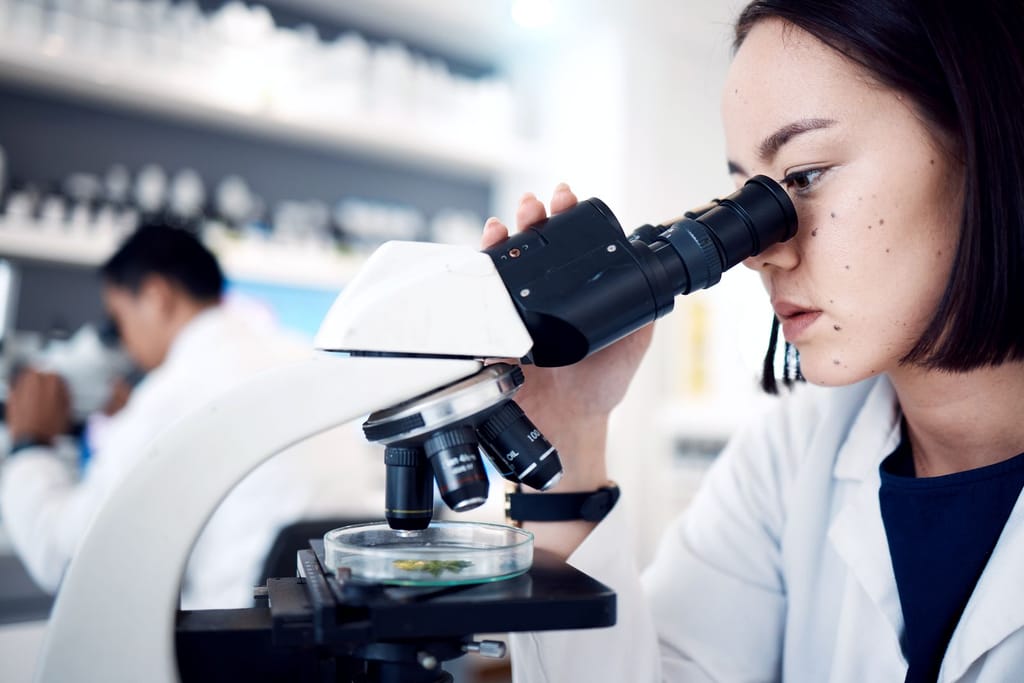What are GMOs?
Genetically modified organisms (GMOs) are organisms whose genetic material has been altered using genetic engineering techniques. These techniques are used to introduce new traits to the organism, such as resistance to disease, or to increase the production of a desired product. GMOs are becoming increasingly common in the food system, with many nations allowing their production and consumption.

History of GMOs
Genetically modified organisms are organisms in which the genetic material has been altered using genetic engineering techniques. These techniques known as recombinant DNA technology, use DNA molecules from different sources which are combined into one molecule to create a new set of genes.
This technology was first developed in the 1970s, and since then it has been used to create organisms with improved traits such as increased crop yields, disease resistance, and improved nutritional content. The first genetically modified food crop was the Flavr Savr tomato, which was developed in the early 1990s. This tomato was modified to have a longer shelf life than regular tomatoes, allowing it to be shipped further distances and stay fresh for longer.
Since then, many other genetically modified food crops have been developed, including soybeans, corn, potatoes, and cotton. In addition, the technology has been used to create medicines and vaccines, as well as to improve animal health and productivity. The development of GMOs has been controversial since it began. Some people are concerned about the potential health and environmental risks associated with the use of GMOs, while others argue the benefits outweigh the risks. In addition, there is concern that the spread of the organisms could lead to the loss of biodiversity, as certain species are replaced by genetically modified versions.
In recent years, the use of GMOs has become increasingly regulated. Most countries have laws and regulations governing their development and use, including labeling requirements for food products. In addition, the European Union requires that any food product containing modified organisms must be labeled. Despite the criticism and controversy, the use of GMOs is likely to continue to increase as researchers and companies develop new products and applications. As the technology advances, it is possible that genetically modified organisms could become even more widely accepted and used in the future.
Understanding GMOs
GMOs are organisms whose genetic material has been altered using genetic engineering techniques. This technology is used to introduce new traits into an organism, such as enhanced nutritional value, increased resistance to pests, or improved crop yields. Using GMOs has raised several ethical and safety concerns.
One argument is that genetic engineering may lead to unintended consequences, such as the potential for new allergens, or the creation of superweeds that are resistant to herbicides. Some worry that the widespread use of GMOs could lead to the erosion of biodiversity, as genetically modified crops might displace traditional varieties. Supporters of GMOs argue that the technology has the potential to reduce world hunger, as it can increase crop yields and decrease the need for chemical pesticides and herbicides.
Genetic engineering can be used to develop crops with improved nutritional content, such as those with higher levels of vitamins and minerals. The use of GMOs could have environmental benefits, such as reducing water and soil pollution. The debate surrounding modified organisms has prompted several countries to enact legislation regulating their use. In the United States, the Food and Drug Administration has issued regulations requiring companies to label food products containing such ingredients. Other countries, such as France and Germany, have banned the cultivation of certain GMO crops.
Though there is still much to be learned about the safety and implications of the technology, the use of GMOs has become a source of heated debate. It is important for individuals to understand both sides of the issue in order to make informed decisions about the use of this technology.

Benefits of GMOs
Genetically modified organisms have been a source of debate for many years. On one side, there are those who feel that the manipulation of organisms for a variety of purposes is necessary for the advancement of agriculture, medicine and food science. On the other side, there are those who are concerned about the potential risks of these organisms and their implications for the environment. Despite the controversy, there are many potential benefits that should be explored.
First, GMOs can create crops that are more resistant to disease and pests. This can cause higher crop yields and fewer losses because of infestations. They can create plants that are more tolerant of drought and other environmental stresses, which can help farmers in areas prone to drought or other environmental challenges. GMOs can also create crops that are higher in certain nutrients, such as vitamins and minerals. This can be especially beneficial in areas where people are at risk of malnutrition because of a lack of access to essential nutrients.
Genetically modified organisms can create plants that are more efficient at photosynthesis, which can lead to increased crop yields. Finally, these man-made organisms can create plants that are more resistant to herbicides and pesticides. This can help reduce the amount of chemicals used in agriculture and can reduce the risk of contamination in food and water supplies.
Regulations
The regulations that exist to protect consumers from genetically modified organisms vary from country to country, but the most common regulations involve labeling and traceability requirements. Labeling requirements typically involve the use of a label or logo to show that a product contains GMOs.
For example, in the United States, the Food and Drug Administration requires that food products which contain GMOs must be labeled. In the European Union, labeling is too mandatory for all products containing GMOs.
Traceability requirements ensure that products containing these organisms can be identified and tracked from farm to fork. In the United States, the FDA requires food manufacturers to maintain a record of the source of their ingredients and the processing steps used to make the final product. This information is then accessible to the public via the Food Safety Modernization Act. In the European Union, traceability is also required for products containing GMOs.
Besides labeling and traceability requirements, some countries have introduced restrictions on the cultivation of GMOs. For example, in the United States, the cultivation of genetically changed organisms is regulated by the U.S. Department of Agriculture . The latter reviews and approves applications before any such crop can be planted. In the European Union, regulations on the cultivation of GMOs are even stricter, with a ban on the cultivation of some GMO crops.

Impact of GMOs
GMOs have become increasingly common in the global agricultural landscape. While they have been heralded as a solution to food insecurity and poverty, questions remain regarding their potential impact on the environment.
The primary benefit of GMOs is their potential to reduce the use of chemical pesticides, herbicides, and fertilizers. By engineering crops resistant to pests, weeds, and disease, farmers can reduce their reliance on synthetic chemicals, which can pollute soils, ground and surface water, and the atmosphere. GMOs can also help preserve natural habitats. For example, the development of herbicide-tolerant crops has enabled the practice of conservation tillage, which reduces the destruction of natural ecosystems caused by conventional ploughing.
Despite these potential benefits, the use of genetically modified organisms can have some unwelcome environmental consequences. For example, the widespread cultivation of a single crop can lead to a monoculture situation, which decreases biodiversity and increases the risk of pest outbreaks. The transfer of genes from genetically modified crops to wild plants has been observed, resulting in the potential emergence of superweeds that are resistant to herbicides. The extensive use of certain herbicides, such as glyphosate, on GMO crops can lead to the destruction of beneficial plant species, such as clover and other legumes.
Conclusion
GMOs are a complex and often controversial topic. While there are valid concerns about the safety of genetically modified organisms, the potential benefits of this technology should not be overlooked. They can have a positive impact on food production, nutrition, and the environment, and further research is needed to ensure that they are used responsibly and safely.
Reference
- Genetically Modified Organisms. (n.d.). https://www.nationalgeographic.org/encyclopedia/genetically-modified-organisms/
- NutritionHow GMOs Are Regulated in the United States. U.S. Food And Drug Administration. https://www.fda.gov/food/agricultural-biotechnology/how-gmos-are-regulated-united-states
- Rd, R. R. M. (2020, July 2). GMOs: Pros and Cons, Backed by Evidence. Healthline. https://www.healthline.com/nutrition/gmo-pros-and-cons
- Stearns, S. (2022, July 26). What are GMOs? Science of GMOs. https://gmo.uconn.edu/what-are-gmos/